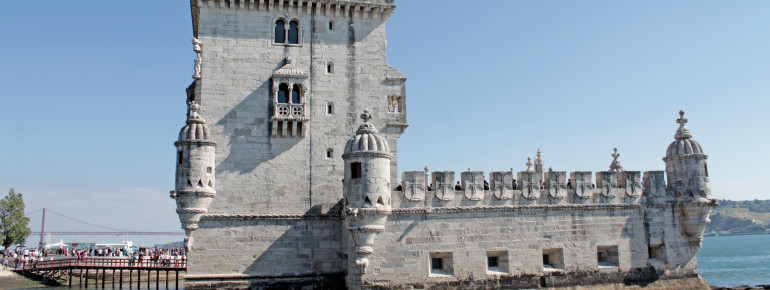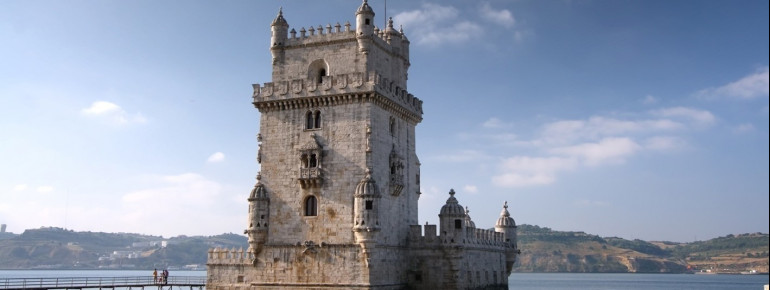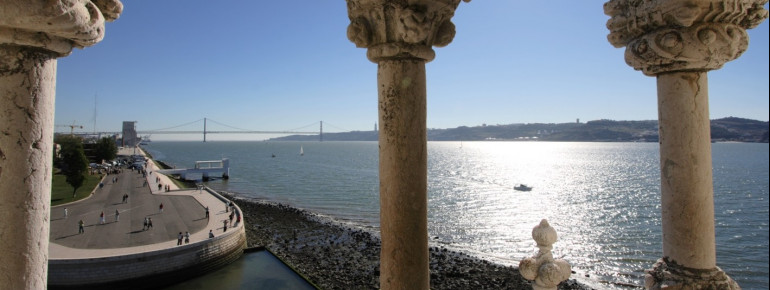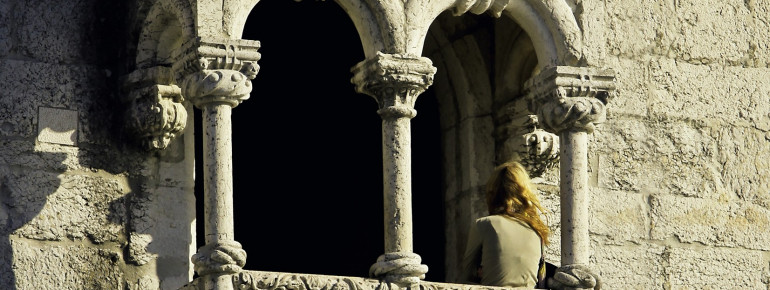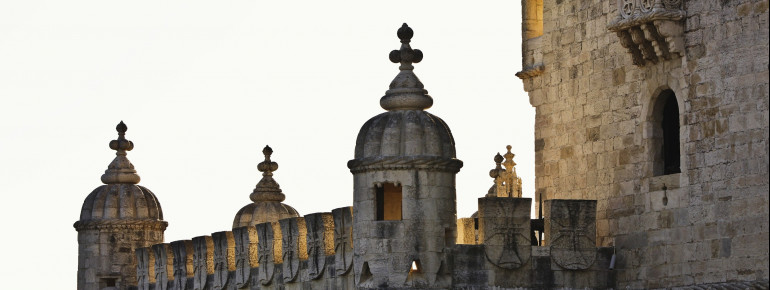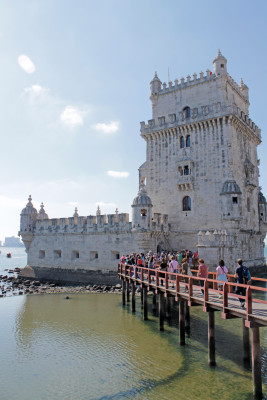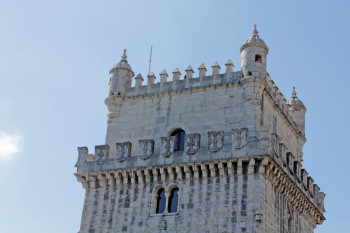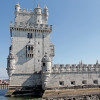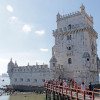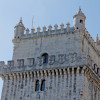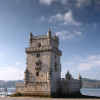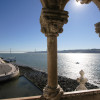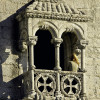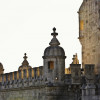Contents
Description
The Torre de Belém is one of the most famous landmarks in Lisbon. It is located in the west of the city in the Belém district, directly at the mouth of the Tejo. The tower was built in the 16th century to defend the town on an island in the river. However, since its course changed over the centuries, the tower is now on the shore and can be reached via a short footbridge.
The complex consists of a four-storey tower, which is 35 meters high, and a hexagonal bastion. The architect Francisco de Arruda had the tower built entirely in manueline style, which was commissioned by King Manuel I.. This architectural style is considered to be very magnificent and is inspired by the voyages of the seafarers. The facade of the tower is elaborately decorated. The building is surrounded by ropes of stone, which form artistic knots. In addition, you will recognize crosses of the Order of Christ on the facade, but also symbols of seafaring. With its wall projections and balconies, the exterior decoration also reflects Arab and Venetian influences.
A Rhino in Lisbon
You shouldn't miss the rhino horn sculpture, which is located on the northwest side of the tower, because it is the first sculpture of this animal in Europe. It represents a rhinoceros that came to Lisbon in 1515 as a gift from the Governor of Portuguese India, Afonso de Albuquerque. A sensation at that time, which even inspired Albrecht Dürer to his well-known woodcut, Rhinocerus! However, the most elaborate design is the south side of the tower. On the second floor a veranda was built with seven arches and an elaborate balustrade. Since this side is executed to the river, the sailors and explorers who returned home or set sail passed by here. In the south, on the wall of the bulwark, there is a sculpture of Mary and the Child Jesus, called Our Lady of Safe Return.
Inside the tower
Not only the terrace of the bulwark is worth a visit, also the interior is worthwhile, which you can enter from the south side. A spiral staircase takes you through the four floors of the tower. You can visit the chapel and the governor's room or stop by the king's room, where you can reach the balcony. An even better view is offered by the observation platform at the top of the tower, where you will be rewarded with a great panorama after the ascent. From up here you can see the mouth of the river and the western part of Lisbon. You can see the ruins of the Twin Tower on the opposite bank and discover other sights of Belém, the Monument of Discoveries or the Jerónimos Monastery.
Historical Information
The tower was commissioned in 1515 by King Manuel I. and completed in 1521 after six years of construction. Initially used for defence, it also housed a prison from the end of the 16th century. During the earthquake of 1755, the Torre de Belém was preserved as one of the few important buildings in Lisbon. However, his twin tower on the opposite bank, S. Sebastião, was destroyed. When Napoleon's troops conquered the city at the beginning of the 19th century, the construction of the tower was changed, but in 1845 it was reconstructed in its old form. In 1983 the Torre de Belém was declared UNESCO World Heritage.
Interesting facts
- The day pass at Torre de Belém near Lissabon is € making it the cheapest tourist attraction in Portugal.
How to get there
By car
The Torre de Belém is located in the west of Lisbon. You can reach it via the A 36, which you follow to the Tejo. Here change to EN6 (Avenida da Índia), which leads to the monument.
With public transport
If you are travelling without a car, you can take the bus lines 28, 714, 727, 729 and 751 to the Torre de Belém. In addition, the tram 15 goes there.

